Okay Google Image of Chimpanzee Eating Small Pieces of Salt Image of Baby Goat Baby Zombie
NAIROBI, Kenya — Kenyan researcher James Miser Akoko stood at the edge of Nairobi'due south vast Dandora dump in the late afternoon estrus, staring down into a recipe for the next pandemic.
Below him, dozens of men and women scoured a 30-acre garbage pit in a grim version of recycling, gathering deflated soccer balls, soiled plastic toys, filthy clothing and blankets, fifty-fifty abandoned airline nutrient. They worked with bare hands and no face masks, shrouded by smoke from minor fires and shadowed by the large marabou storks with which they compete.
Costless-ranging pigs, goats and other livestock grazed on pass up, mark fourth dimension until the day they go food themselves – man food.
A quarter of a mile abroad, in the neighboring Korogocho slum that shelters 150,000 of Nairobi'due south poorest people, Akoko encountered a middle-aged woman laboring over a large, uncovered pot of simmering chicken intestines. These she would sell to passers-by in the slum. Then, as the lord's day gear up, she would turn her attention to some other source of food and income: an open bag of raw craven legs and feet, fought over for now by buzzing flies.
As she tended her pot, dozens of marabou storks appeared, circling overhead.
"I task that is still undone for united states," Akoko said, "is to become into the dump sites and catch the marabou storks to see what they are carrying.
"Studies have shown that they're quite good for the ecosystem considering they basically articulate the expressionless stuff – pieces of meat, expressionless animals. Simply nosotros don't know what they are spreading in Nairobi in terms of disease."
When scientists worry nigh the side by side big outbreak, it is places similar this they mention: sprawling Third Globe cities, with large populations of humans and animals living together amidst the squalor of dirty water and poor sanitation. Of Nairobi's 3.iv meg people (more the combined populations of Chicago and Milwaukee), about threescore% live in densely-packed slums, sharing muddy roads with goats, pigs, chickens, cows, dogs and rodents.
Imagine a melting pot into which the livestock, the birds, the flies and the people all contribute bacteria and other microbes – a Petri dish for the cosmos of new threats to human health. Pigs, for case, human activity every bit mixing vessels for influenza. They can be infected by both bird and human flu, allowing genetic material from each to combine and form new strains.
A few years ago, researchers at King's Higher London imagined how this biological science might play out in a slum, devising a hypothetical scenario, in which "poor sanitation and high population densities lead to a new outbreak of virulent flu."
Their scenario begins with impoverished residents watching their pigs and poultry fall ill, suffering high fevers and bleeding from the mucous membranes in their mouths and noses. Within a twenty-four hours, animals begin to die. Within a few weeks, the new influenza spreads from the animals to the humans who handle them. And because the residents have lives exterior the slum, working in hotels and factories, riding on buses, shaking hands with everyone from aid workers to merchants, the influenza advances beyond the slum.
By the time the Earth Health Organization sounds an warning, the illness has already crossed continents.
Inside a month and a half, the authors wrote, "the virus has spread to nearly 80 meg people worldwide. Carried abroad by international long distance commercial flights, the affliction leap-frogged out of Asia and appeared in Hong Kong, London, Paris, Marseilles, Northward Africa, New York, Beijing, Calcutta and Dubai almost simultaneously."
All told, the flu kills 140 million people.
It is only hypothetical, of course, though "a plausible state of affairs," said Kristen Bernard, professor of virology at the University of Wisconsin-Madison'southward School of Veterinary Medicine. "Absolutely, information technology'due south plausible."
The authors set their scenario in the poverty-stricken favelas of São Paulo, Brazil. They chose the favelas considering these areas have a high density of humans and animals living in close quarters, sharing poor water and sanitation.
Much like Nairobi. Or Bombay. Or Mexico City. Or dozens of similar cities around the globe, all expanding, every bit the globe's population shifts from rural to urban areas.


In Nairobi, where the population has more than doubled in 27 years, Akoko'south employer, the International Livestock Inquiry Institute, is not waiting for the next pandemic. The institute is part of a projection studying the interactions between people and animals in the metropolis and how those contacts contribute to disease. The goal: to modify the conditions and behaviors that put Nairobi at high risk for outbreaks.
"Korogocho is a slum and the ground underneath Korogocho is a (onetime) dump," explained Eric Fèvre, a researcher at the University of Liverpool who too works for the institute and leads the projection Akoko works on. "These guys (in the dump) they're exposed to birds and rodents and feces ... Hundreds of people depend on that dump."
Aslope the dump flows a tributary of the Nairobi River, a waterway then polluted with litter and human and industrial waste that Fèvre called it "basically a sewer full of plastic numberless."
***
Americans seldom see the disease-brewing conditions in Nairobi and like large cities across Africa and Asia, but scientists say they can no longer afford to dismiss them every bit problems of the developing world. Our college standard of living and avant-garde medical arrangement practise not insulate us from diseases emerging halfway around the world.
The notion that we are safe from distant outbreaks is a "historical misconception" that dates back a century to the days before international air travel, said Amesh Adalja, a senior associate at Johns Hopkins Center for Wellness Security.
Dorsum then, the U.South. had cholera and yellowish fever outbreaks of its ain, but faced much less of a threat from infected travelers. About died of the diseases they picked up overseas earlier they could render habitation to spread them.
Today, "a microbe originating in Africa or Southeast Asia tin arrive on North American shores within 24 hours," co-ordinate to a 2014 written report by the U.Due south. Centers for Illness Control and Prevention.
We've already seen the results. Studies say that a majority of U.South. cases of difficult-to-care for, drug-resistant typhoid fever can be traced back to six developing countries.
Final year, a record 213 million international travelers flew in and out of the Usa. In 2015, the nigh recent year for which data is available, more than 29,000 Kenyan citizens visited the U.S.
While air travel now links Republic of kenya and the U.Southward., offer a path for affliction, the countries showtime out with very different risk profiles. Americans still benefit from basic necessities most Kenyans lack: clean water, skillful sanitation and mosquito-proof homes equipped with screen windows and ac. The deviation in affliction price is staggering.
Each year the U.Southward. records an estimated 1,500 to 2,000 cases of mosquito-borne malaria, almost all involving travelers from abroad. Kenya records more than than 9 times every bit many cases on an average day – some 6.7 million cases a twelvemonth, including 4,000 deaths.
"It's a very debilitating disease," said Bernard Bett, a senior scientist at the Nairobi plant who survived several bouts of malaria during his childhood in the Kenyan highlands. "You get headaches. You don't swallow. You don't have the strength to do annihilation."
Most American children never know the misery of malaria, another reason information technology is sometimes easy to believe ourselves allowed to the pathogens flourishing in the developing world. Nevertheless, the U.Southward. has experienced the havoc that even a single example of a tropical disease can cause.
In 2014, Thomas Eric Duncan showed no symptoms of illness when he boarded a aeroplane in Monrovia, Liberia, bound for the U.Southward. He arrived in Dallas on Sept. 20 and became sick a few days later – America's first case of Ebola and its sole fatality.
"The offset case of Ebola diagnosed in the U.Southward. had major cascading effects that rippled through several industries," said Adalja, the Johns Hopkins researcher. "Every hospital had to augment their preparedness, public wellness agencies were tasked with monitoring large numbers of those returning from West Africa, airport screening tools had to be developed, and full general panic from the public and politicians ensued."
While our Ebola scare passed, a longer-term trouble arrived terminal July.
A little more than a year after the Zika virus began storming through Brazil and nigh of Central and South America, the virus arrived in South Florida. Information technology'southward not known for certain whether Zika came to Miami on a plane, but once there, it found a dwelling.
"It was not 'if', only 'when'," said José Szapocznik, a Zika expert at the Academy of Miami, explaining that the mosquitoes that carry the virus were already in Florida, "up the Due east Declension, out to Texas and the Gulf areas."
All the mosquitoes needed were infected people to bite, and they would observe them soon enough.
"There is a huge viral reservoir in the Americas," Szapocznik said, "and we have people coming from that viral reservoir to Miami on an ongoing basis."
While not a pandemic, Zika offers a example study. From its discovery seven decades agone in a forest in Uganda, Kenya's neighbor to the east, the virus traveled thousands of miles to the neighborhoods of Miami.
A new affliction to test us.
***
Zika arrived last July at the superlative of a hot, humid Miami summer.
Tourists and locals were crowding the sandy beaches and bustling, narrow streets of Miami Beach, strolling between stores and sipping drinks under the beaming lord's day.
For ii local women, Yessica Flores and Sloane Borr, information technology was a joyous time. They were meaning.
Flores, 38, was nearly three months into her pregnancy; the child would exist her 2nd. An immigrant from Honduras, she lives in a colorful one-story domicile in Miami's Wynwood neighborhood with her husband, her mother and her 14-twelvemonth-onetime girl, Andrea. The family had only returned from a trip to Honduras a few weeks earlier, and Flores was alternating between responsibilities at home and her job in the deli of a local schoolhouse.
"I heard nigh Zika from the time it started in Miami," Flores said, speaking through an interpreter. "But I didn't carp with it."
Borr, 30, lives a few miles northeast in a gated community on the edge of Wynwood. A writer, she works from an function in the dwelling house she shares with her husband, Paul, and their canis familiaris and cat.
Borr was enlightened of Zika's spread through the Americas, merely the threat seemed distant. As a soon-to-be female parent, she sympathized with the mothers of the infected babies in Brazil. Merely mosquitoes, though a nuisance, were simply nothing new.
"That's just like a way of life in Miami, to be covered in mosquito bites," Borr said. "You lot don't recall anything about it. You don't realize that, in other countries, a mosquito bites you and you could be expressionless."
Watching Zika more than closely than the two women was a human named Chalmers Vasquez, operations manager of Miami-Dade County's mosquito control team. He believed the region was fix to combat the mosquito that carried the virus. In the past, the department had handled such tasks with ease.
The canton had recorded cases of dengue fever in 2010 and 2014, and chikungunya, likewise in 2014. Both viral diseases are transmitted by the same mosquito responsible for Zika: Aedes aegypti.
On July 15, 2016, Vasquez and some co-workers stopped for lunch in Fort Myers on their way dorsum from a visit to another musquito control district when his telephone rang.
Zika had arrived in South Florida. It was the canton's showtime Zika case caused by local mosquitoes.
That dark, he and his team fix their first round of mosquito traps and began monitoring the population.
***
For more than than half a century, Zika had kept a low contour.
Discovered in 1947 in a monkey from Uganda's Zika Woods, the virus spread through mosquitoes in Africa and Asia. Humans rarely got the virus, and the symptoms were and so mild that those who did rarely sought treatment.
In fact, Zika seemed the least troubling of the various diseases carried by Aedes aegypti. The others – Chikungunya, dengue fever, West Nile virus and yellow fever – all continue to ravage countries that lack proper musquito command.
Past comparison, Zika had done fiddling damage.
Before 2007, only 14 cases of Zika had been documented in people, co-ordinate to the Globe Wellness Organization. Because just 20% of patients show symptoms, it can exist hard to track the movement of the virus.
Despite the scarcity of symptoms, blood tests showed the virus was really very mutual in Africa and had spread to Southeast Asia: from 2% infected in North Vietnam to 75% in Malaysia.
Still, Zika wasn't a high international business concern until a small isle in Micronesia, called Yap, began to notice a new illness causing rashes, pinkeye and articulation pain. It looked like dengue, but something was unlike: the fever was milder and accompanied in some cases by pinkeye. In June 2007, lab samples sent to the CDC confirmed the disease was Zika. The stealth virus had caused its first outbreak.
In the cease, an estimated 73% of Yap's more than than 7,000 residents were infected.
Soon, the virus began popping up in other places that had never seen it before – places where people had not developed immunity.
In May 2015, 8 years subsequently the outbreak on Yap, researchers in Brazil's National Reference Laboratory confirmed Zika was circulating in their country. Reports of birth defects that would later be linked to Zika infection began to pour in: babies born with small heads and poor eyesight. The babies wailed in about constant pain.
Zika's sudden rise to international prominence continues to bamboozle experts. It is unclear how the virus went from anonymity to, as the World Wellness Organization called it, a "public health emergency of international concern."
The global outbreak left scientists wondering how the astringent effects of Zika, including the nascence defects, went unnoticed for decades.
Some have suggested that in the new areas, at that place were simply more meaning women vulnerable to infection. In Asia and Africa, where many had already caught the virus, the just people left to infect were children, and they would have immunity past the time they reached childbearing age, said Sharon Isern, a researcher at Florida Gulf Coast University.
Matt Aliota, a researcher at UW, suggested another possibility: The virus had never infected a population big plenty to allow scientists to runway the effects.
1 other factor could be at play, according a 2016 Nature article by Isern and her colleagues: Dengue.
Lab work by Isern suggests a prior dengue infection could permit Zika to proliferate more in the trunk, causing the severe infection characterized by birth defects in babies. Notwithstanding, the theory remains controversial, and early research in primates at UW has shown there may be no such effect.
Brazil's outbreak was curbed, thanks to a wide-ranging strategy of mosquito control – from fumigating twenty million homes, to releasing millions of genetically modified mosquitoes that produce infertile offspring. Fifty-fifty so, the outbreak crossed borders. As of March 2017, 84 countries take reported show of Zika in native mosquitoes.
The breeding habits and distribution of Aedes aegypti make it a fauna to control, said Vasquez in Miami. Even so, the mosquitoes themselves tin't travel very far – just a quarter mile in their lifetimes.
Only people tin can. And so, Zika crossed the ocean and made its fashion to Miami.
***
In Kenya, the second week of January this year brought a fairly typical burden of disease: 61,000 new cases of malaria (xxx years' worth for the U.S.), and 3,200 cases of typhoid fever (six months' worth for the U.Due south.).
On this detail week, though, the challenges facing Nairobi's health care system were more of the slowly-ticking, time flop sort: the kind illustrated by the gap betwixt urban center laws and the lives of urban center residents such as Paul Mugai Ngage.
Ngage lives in a identify that is absent-minded from most maps, a blank space where more than 133,000 people live. Officially, the Kawangware slum does not exist. Neither does Korogocho, where the scavenged goods from the dump are sold. All of Nairobi's slums are considered illegal settlements.
Yet there stood Ngage, smiling equally he gestured across his yard.
"Welcome to my habitation," he said, laughing and describing his age equally "over 75."
The picayune property where he lives belonged to his father, who at present lies buried behind the firm. Today, Ngage shares the modest concrete home – essentially one large open room — with his wife, vi children and "many grandchildren."
In Nairobi, keeping livestock in the city is illegal, as it is in many large cities around the globe. The practice began falling into disfavor in the 19th century, considered unsanitary and a illness risk.
Yet there in Ngage's yard roamed an assortment of goats, sheep, geese, chickens and the family domestic dog. The jawbone of a dead cow lay in the clay, just outside the pen where the family unit'due south lone surviving moo-cow was resting. Rabbits and pigeons stared out from a stack of hutches.
"What you should appreciate is that the goats, sheep, the geese, the chickens, all of them are in one area, where they collaborate," explained Patrick Muinde, a veterinary research banana at the Nairobi institute. "A disease which can be transmitted by geese tin be passed to chickens with severe consequences."
Ngage'southward g and the air effectually it amounted to a microbial stew, a single identify in which different species deposited their wastes, bodily fluids, even the tiny droplets that spread influenza.
Many animals accept their own strains of influenza.
When they are kept in close quarters, a unmarried brute may be infected with ii different strains. As a result, segments of genetic textile from one strain can mix with those from the other to course something new, a process scientists call reassortment.
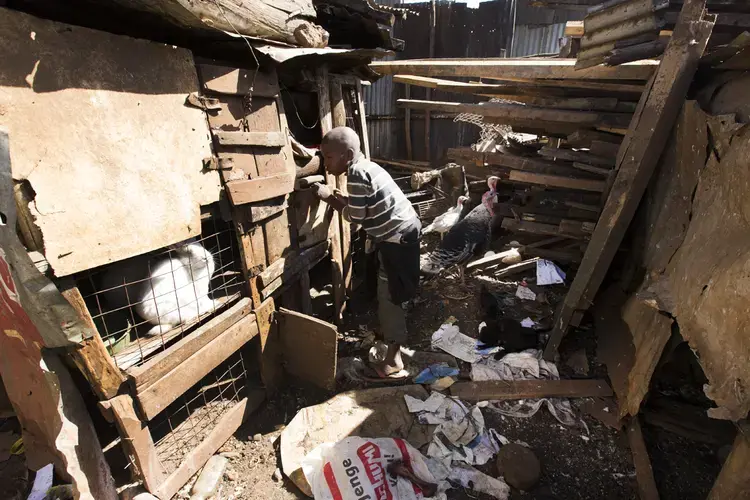
This is how new pathogens are born.
None of the weather in the thou are unique to Ngage's home, simply common in the slums, where poverty and tradition dictate beliefs. For poor families, soap is a commodity that must exist weighed against necessities such as water, food, shelter and school fees for the children.
"They'll tell you, 'I've non been washing my easily. I'm OK. What does information technology matter?'" Muinde said of the residents.
Here open-pit latrines — slits in the ground that must exist crouched over — are a luxury. Those who do non have ane must pay 5 shillings (roughly 5 cents) each time they need to go. Some lack the coin, and at night, women feel unsafe venturing out in the slums.
So, residents have devised an culling, the so-called "flying toilet." The poor use plastic numberless for their excrement, then throw the numberless as far every bit they can.
Although human waste product is a source of many diseases, including cholera, typhoid and hepatitis, discouraging residents from resorting to the use of flying toilets is not equally simple as it might seem.
"People don't use flying toilets considering they desire to, but because they don't have any option," said Fèvre.
Residents in the slums accept made the same signal while admitting to researchers that they have eaten airline nutrient collected from the dump, or chicken feet from the flooring of a slaughterhouse.
"They know there may be risks," Fèvre said, "and they don't like those risks, but they don't accept a choice ... So it is a survival strategy, and changing that means changing the root cause, which is poverty."
Fèvre and his fellow researchers have spent years earning the trust of Nairobi residents in the grade of a study called "99 Households." The project examines a multifariousness of homes, from the slums to the wealthy neighborhoods, focusing on the comparative disease risks of those who keep livestock at home and those who do non.
Researchers visit each dwelling house once with a medical and veterinary team, taking stool samples from every individual in the household – humans and livestock – and walking around kitchen and livestock areas in special absorbent shoes that pick up microbes from the floor. They as well set traps to catch the wildlife – everything from birds and bats to rats, mice, squirrels and mongooses.
Whenever they see risky behaviors, the researchers try to right them. But in the slums the prohibition on keeping livestock takes a backseat to survival.
"There is a difference betwixt the letter of the law and the practice of it," Fèvre said. "Nosotros stumbled across a guy living in a three-story shack congenital with scavenged forest and keeping half dozen,000 chickens."
In the days after Zika arrived in Miami, Vasquez's squad worked quickly, walking through neighborhoods spraying insecticides from their backpacks. The 24-hour interval after the virus made its first appearance, they searched for anything that could collect water for the mosquitoes to breed in — no bottle cap was besides pocket-size.
Borr, one of the mothers-to-be, watched the virus change the city she'd lived in since she was 4.
"Information technology felt like a zombie apocalypse was happening, or something. It felt so weird," she said. "I've never seen anything like information technology."
Within a few days, Borr and her hubby had decided that she should go out Miami to alive with family unit in Boston. She stayed there for a calendar month and tested negative for the virus.
Notwithstanding, she missed her husband so much that she returned to Miami in September.
Borr stayed in her habitation for the rest of the outbreak, armed with mitt-held bug zappers and shielded by citronella candles and mosquito netting. She and her married man covered themselves in issues spray and layers of vesture any time they went out. They refused to swallow in restaurants where the doors and windows were open.
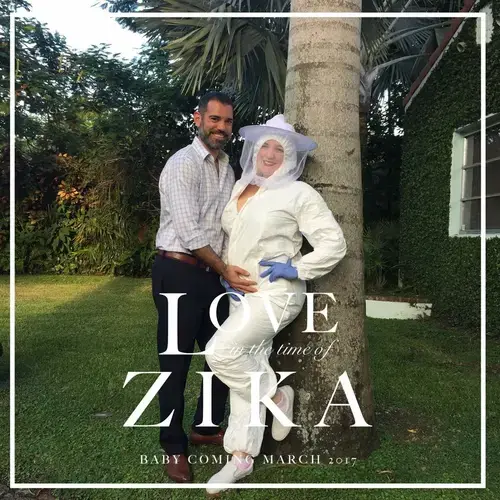
She wore an bulletproof beekeeper'southward arrange for her outdoor pregnancy photograph, then added a wry, Hollywood-way explanation: "Love in the time of Zika."
Meanwhile, by August, Flores was nearly 5 months into her pregnancy. One day, while working at her job in the schoolhouse cafeteria she received a phone call. Information technology was the lab processing her Zika exam. The voice on the other end kept asking questions until Flores posed one of her own.
"Does this mean I have Zika?"
She was told she would demand to talk to her physician.
The reply she finally got was not the 1 she wanted.
"I started to cry, 'Oh Lord.' And then i of the women doctors told me, 'Accept information technology easy, everything will be OK.' My reaction was something strong," she said. "Simply I asked the doctor, considering there was all this talk about Zika, I told her that I had no symptoms, I had felt nothing."
No fever, no rash, no joint or muscle pain. Simply the test was positive.
As of mid-June 2017, Flores was ane of 351 pregnant women in Florida to show lab prove of the Zika infection.
It is all the same early in our understanding of Zika's link to the nascency defect microcephaly: babies built-in with abnormally small heads due to underdeveloped brains. Doctors could not tell Flores and the other mothers whether their babies would have the birth defects.
They could just monitor the babies' evolution every week.
Flores began to pray.
***
In the showtime, Miami'south response to the Zika virus was trial and error.
"Nosotros found out that the insecticide that we were using in the spray trucks was no good," Vasquez said. "This is something that is going on in many places effectually the world — that mosquitoes have developed resistance to pyrethroid pesticides."
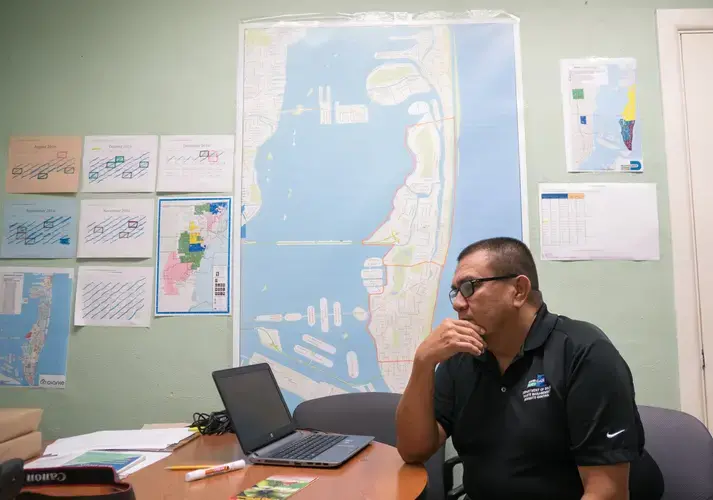
Resistance occurs when mosquitoes develop protective genes and survive to reproduce. The stronger mosquitoes proliferate, while the others die, assuasive the resistance to spread through the population.
In the by, Miami-Dade'due south mosquito control team had used pyrethroids, 1 of two main families of insecticides, to curb blackness salt marsh mosquitoes. Those mosquitoes had never been exposed to the chemicals and, as a result, had not developed resistance.
Vasquez said the mosquito control team only learned of Aedes aegypti'southward resistance when they began spraying and institute that it seemed to make footling difference. The number of mosquitoes they were trapping remained the aforementioned.
Afterward testing various compounds, they switched to naled, a potent insecticide sprayed from airplanes. It doesn't take much naled to get the task done. An acre can be covered with less than three ounces of the chemic. Still, the aerosol in the air caused concern.
Some residents objected to the aerial spraying, worrying virtually the insecticide'southward impact on humans and the environment. Just the county continued the practice. Vasquez said the aerial spraying conclusion was fabricated with the CDC and backed by research demonstrating its success.
"And we saw results," he said.
Aeriform insecticide treatments cutting the number of mosquitoes they caught to less than half in a calendar week, significant progress.
Flores' home was inside ane of the Zika zones targeted by the sprayers. Planes flew overhead and she heard about workers spraying inside old houses. Calls from the canton would inform her how long to stay inside after the naled was released.
There has been little research on the touch of naled on human health. In June 2017, a study released by the University of Michigan constitute a link betwixt naled exposure and delayed motor development in infants in Communist china. The enquiry, though far from conclusive, underscored the uneasiness many Miami residents felt.
Borr mostly stayed indoors to avoid the mosquitoes, so airborne naled was non a major business. She believed public health officials were doing their best, simply worried how her unborn child would be affected by the virus, the naled and even the bug spray she was undoubtedly inhaling whenever she did venture outside. The smell of issues spray still makes her tummy churn.
"Our unabridged way of life inverse," Borr said. "Eventually you sort of develop agoraphobia and you don't want to go outside whatsoever longer because it seems like there's all these threats and you simply become scared in your own head."
She tried to pass the time knitting and playing Xbox. All the same, she imagined bat-sized mosquitoes descending on her and endangering her child. Once, when she heard an insect buzz by her ear, she ran and locked herself within her office for 2 hours, hoping it would die.
In Nairobi, non far from where Paul Mugai Ngage raises his family unit and livestock, stands the adjacent link in the nutrient chain: a small, tin-roofed shack called Quality Butchery. Suspended in the window ane morn were the butchered bodies of two cows.
Few slum residents raise enough livestock to feed their families. Most come to a shop like this. Fèvre and his colleagues at the institute have been studying such places in training for the next big outbreak.
Following the food chain — from the urban farms and butcheries to the slaughterhouses — allows the researchers to observe how microbes laissez passer betwixt animals and humans. They learn the paths a disease might follow and the places health officials might arbitrate to control it.
If a virus emerges in a slaughterhouse, for example, it helps to know where the livestock came from and where information technology was sent side by side as meat.
While wealthy nations employ barcodes to track the route meat travels to the consumer, "food takes unlike routes here," Fèvre explained. "In the Westward, a cow is probably slaughtered 20 days (earlier auction) and kept in the chiller. Here consumers don't have fridges."
Nor do many of the butcheries. Leaner cling to the feet of the flies that besiege around hanging slabs of pork and beef. Without refrigeration to boring its growth, the bacteria thrive, raising the threat of foodborne illnesses such as Due east. coli and salmonella. How many Kenyans endure from those diseases isn't clear; no national numbers are kept.
However, the Global Food Security Index, which compares the food systems in different countries, ranked Republic of kenya 88 out of 113 countries for nutrient safety and quality. A study of beefiness in Kenya, published in 2015, said a peculiarly harmful strain of E. coli "was found at every level from loading to offloading, with the highest occurrence on working surfaces and equipment at the butcheries."
Fèvre's squad saw an opportunity to improve conditions at Quality Butchery and others like information technology. In 2014, they picked lx butcheries, gave wing nets to half of them, and then measured the number of flies.
"This is what I would phone call a success story," said Akoko, one of the researchers involved in the study. "This abattoir, when we first visited, in that location were lots of flies. We gave them a fly internet and talked to them well-nigh the flies, and there was a drastic reduction."
The study also showed a broader change in the market. Butcheries not involved in the study asked for the nets because customers now viewed the flies every bit unhealthy, and disliked seeing them buzzing around the meat.
Other problems are not so easily solved. Behind the counter at Quality Butchery stands a thick tree stump used as a cutting board. "In Kenya, all of the butcheries have the tree stump," Akoko said. The tradition has an unfortunate downside; the stump is a magnet for bacteria.
Researchers have tried convincing butcheries to replace the stumps with metal cutting boards that tin be cleaned more than thoroughly, simply they are fighting the economics of a subsistence business organisation. Butchers complain that the metallic boards dull their knives much faster. They find a similar disincentive to wash the stumps frequently. The more they wash, the faster the stumps rot.
Even in the larger city market downtown, "at that place are a lot of gaps in the hygiene," said Maurice Karani, a veterinary research assistant who works with Fèvre.
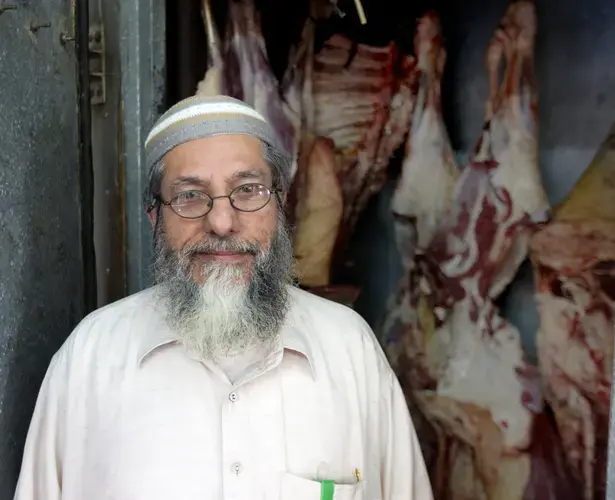
There is no water ice. There are water shortages. Butcheries sometimes reuse the same h2o to wash different cuts of meat.
"Where you are standing," Mohamed Javed said, pointing outside his store at the floor, "they put craven in the morning because they don't take another place."
Javed, who is 64 and sells beef and mutton to support his wife and four children, complained of abuse, and of competitors who undersell him without revealing how far their meat has traveled to reach the market. Most of his own produce, he said, is raised inside 20 miles of his shop.
The 80-year-sometime business Javed inherited from his father boasts one reward, withal. It is one of the only butcheries in the market to have a freezer.
"Information technology was a big purchase," Javed said.
***
Information technology is sometimes easier to meet the vulnerabilities of other countries than it is to run across our own.
In the U.S., few — if any — resort to the use of "flying toilets" or to eating nutrient scavenged from a dump or a slaughterhouse flooring. Few sell meat outdoors, where they might crave a net to control flies.
The meat we purchase is frozen or refrigerated. The butchers who cut information technology accept admission to all the ice and clean water they desire.
And yet, in the U.S., we engage in practices that elevate our ain risks of disease.
The anti-vaccine movement, triggered nearly twenty years ago by a discredited report linking the childhood shots to autism, has led to a resurgence in measles and whooping cough. This spring, Minnesota recorded more than measles cases than information technology had in the 20 previous years combined.
America's organic nutrient motility has led some to consume raw milk, believing that it strengthens the immune system. According to the CDC, raw milk has been linked to 148 outbreaks of campylobacter, listeria and other illnesses, sickening thousands between 1998 and 2011.
Fifty-fifty our access to high tech medical treatments such every bit joint and organ transplants comes with its own risk. Of the ane meg people who receive hip and knee replacements each yr, about 20,000 contract an infection in the new joint, including the MRSA bacteria that has evolved to be resistant to many antibiotics.
And wealthy and developing nations alike must have the likelihood that there are deadly pathogens that have nonetheless to reveal themselves.
"Agent X might be the biggest threat ... the emerging zoonotic infection which emerges into the homo population that we simply can't predict," said Ira Longini, a biostatistician at the Academy of Florida. "Something like HIV, for example. That'southward a large threat. It'south just that we can't simply know what it is. But it'south clearly in that location."
And in today's interconnected world, "there" could be anywhere.
"It's gotta give yous a certain sense of humility about what else is downwardly the road," said Dan Strickman, senior plan officer at the Beak & Melinda Gates Foundation.
"The Zika outbreak — nobody, admittedly nobody expected that."
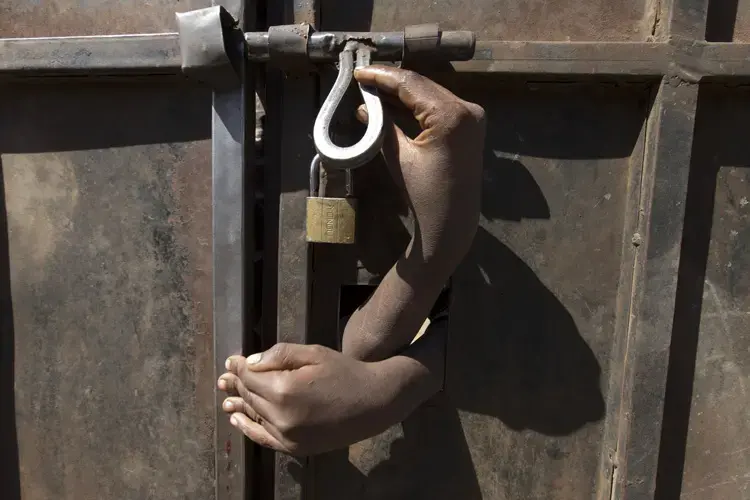
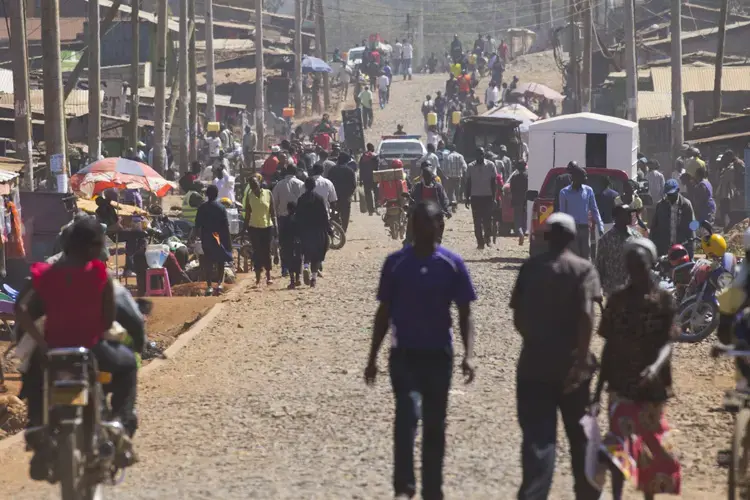
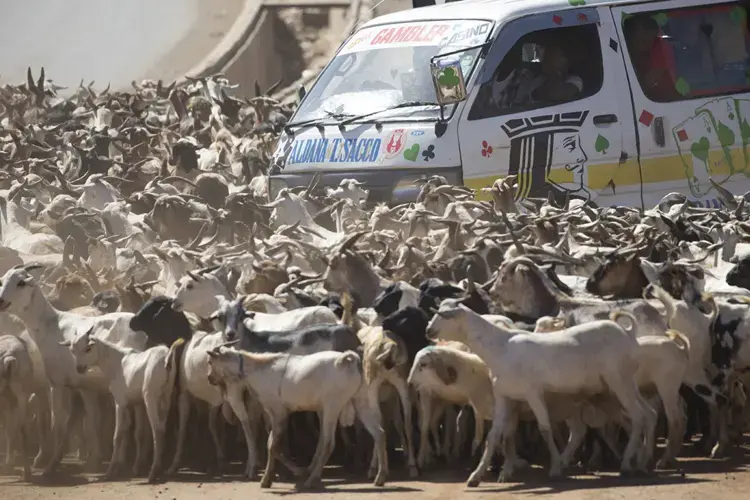
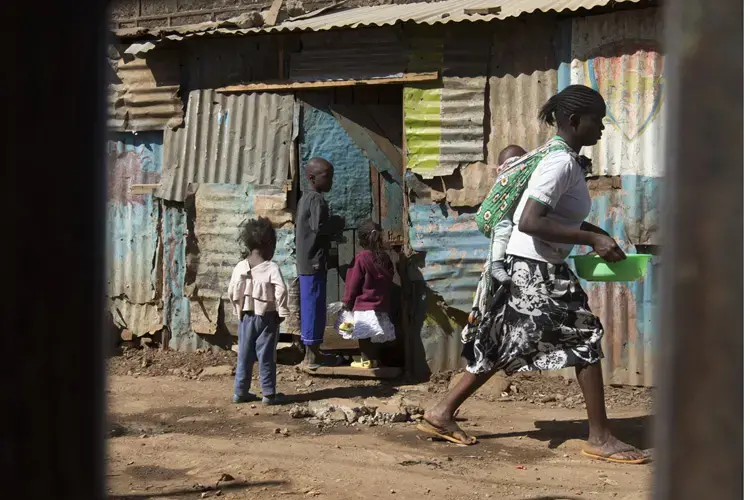
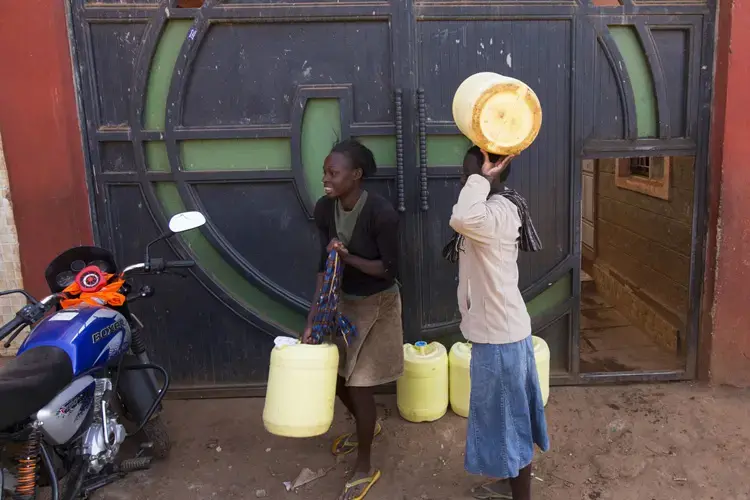
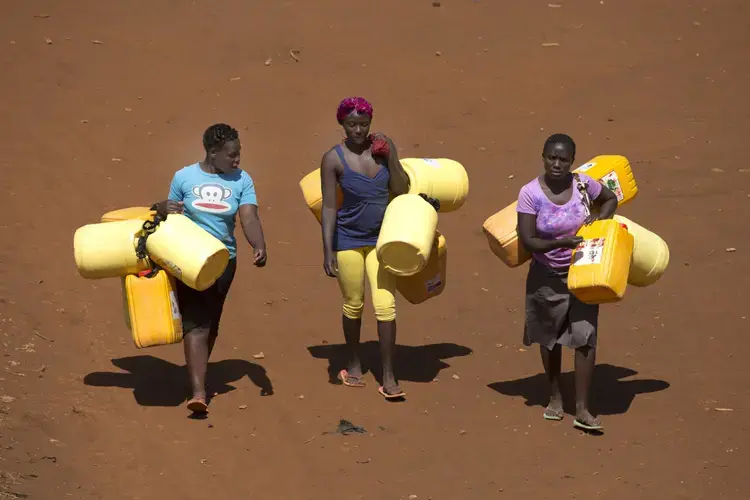
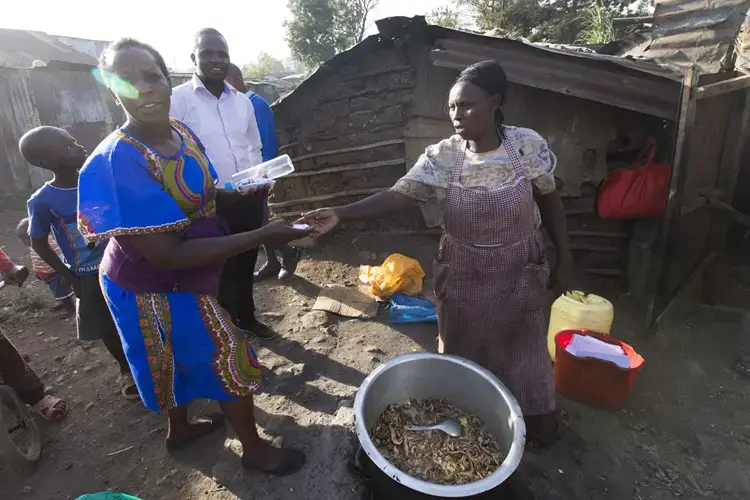
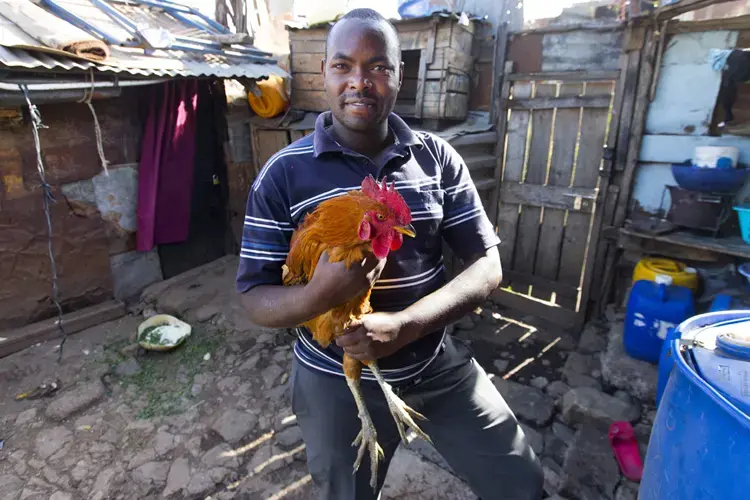

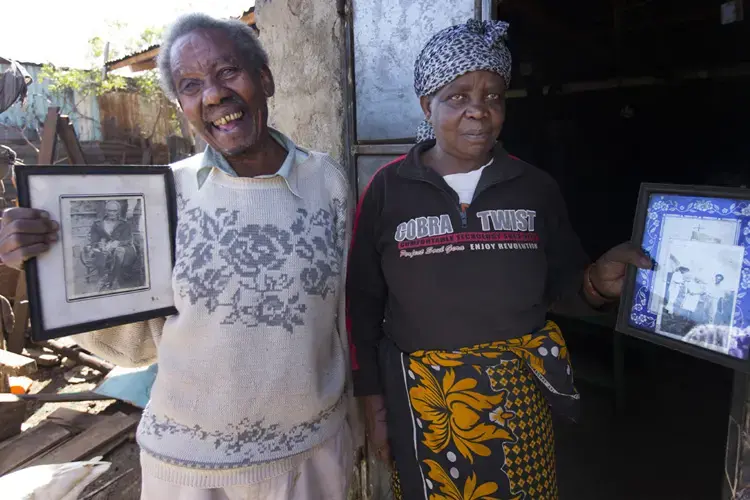
Flores' daughter, Daniella Elizabeth Yac, came into the world suddenly.
On Jan. 27, 2017, Flores went to the schoolhouse where she worked to request her maternity go out. As she was leaving, she felt an abrupt pain. A co-worker told her to go to the hospital.
When she arrived, Ivan Gonzalez, Flores' physician and co-director of the University of Miami'southward Zika Response Squad, was contacted immediately. Every bit shortly equally the baby was born, tests would need to be given to assess brain part and eyesight.
News cameras arrived at the hospital equally Flores went into labor, an indication of how big a story the tropical illness had become. It was as if the globe were standing by, waiting to hear if another babe had been affected past Zika.
That evening, after the babe's tests were complete, the doctor urged Flores and her husband to relax. At vii pounds, Baby Daniella was healthy and fit.
"I gave thanks to God," Flores said.
It is also early on to say whether Daniella has escaped whatever damage from Zika. She will be monitored closely for the first five years of her life to verify that her head and eyes are developing normally.
And so far, Daniella has escaped the fate of 51 babies born in the U.S. with Zika-related birth defects in 2016.
Flores said she wanted people to know that it is possible to accept a healthy baby afterwards existence diagnosed with Zika. She is eager to raise Daniella.
"He gave her to me salubrious," Flores said. "And I expect she will continue that style."
Szapocznik, the Zika expert at the University of Miami, said travel from Latin American countries makes information technology very likely that if the outbreak there continues, the virus volition render to Miami this year. For this reason, one of the key tasks ahead is mobilizing the public against the mosquitoes.
Szapocznik said people accept the ability to finish the spread of Zika abroad and in the U.S. by post-obit unproblematic steps: elimination sources of standing water, avoiding excessive skin exposure and using insect repellent.
"I think people, through appointment in the procedure, civic appointment, tin actually cease this epidemic," he said.
Most experts say it'southward unlikely that the U.Due south. will run across a large-scale outbreak such as the one Brazil experienced. But flare ups are probable, which is why the CDC and others go along to preach mosquito control.
"Then that wasn't a pocket-size outbreak considering information technology only fizzled out," said Strickman at the Gates Foundation. "It was a small outbreak because we did something about information technology."
In Nairobi, researchers have tested many of the animals that cross paths with humans every mean solar day in the slums.
They have gone to considerable lengths, even venturing inside a cave below the urban center's largest slum, Kibera, to sample bats.

"It's merely the most festerous, unpleasant place," said James Hassell, a graduate fellow from the University of Liverpool working at the Nairobi institute. "Y'all've got liquid filtering through the ceiling which is basically homo excrement."
It is important to retrieve, Hassell added, that while wildlife are viewed every bit threats in the emergence of diseases, they besides play of import roles in their ecosystems. Bats accept care of insect command; certain birds help with pollination.
Scientists remain curious about the marabou storks that populate the Dandora dump.
Scavenging birds are a item business organisation considering they comprehend a greater range than other animals, carrying any pathogens inside them to different neighborhoods. But communicable a marabou stork isn't like capturing a small bat in a net.
"Storks are as tall as a big child," said Fèvre, Hassell's colleague. "They take long precipitous beaks and need to exist caught past basically running up to them and putting a big sack over their heads."
So far, researchers in Nairobi have been unable to catch one.
Source: https://pulitzercenter.org/es/node/15892




0 Response to "Okay Google Image of Chimpanzee Eating Small Pieces of Salt Image of Baby Goat Baby Zombie"
Postar um comentário